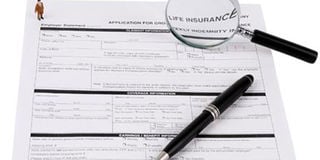WORLD OF FIGURES: Beware, insurance is not an investment option

Mike Maingi wrote to lament about the low returns that his insurer offers. PHOTO| FILE| NATION MEDIA GROUP
What you need to know:
- Suppose that after Mike paid the first Sh5,000 in 2006, he got in an accident that left him permanently disabled. In that case, he would not have been required to make any more payments. But still, on maturity, he would have received the same Sh675,000.
- Now imagine that: you “invest” Sh5,000, wait for 10 years and get Sh675,000. That’s an astronomical rate of return! It is 135 times the initial payment and works out to an average of 63 per cent per year. Even land does not appreciate at such a rate … and, by the way, where could you get a plot for Sh5,000 in 2006?
Mike Maingi wrote to lament about the low returns that his insurer offers. “After struggling over the last 10 years to pay Sh5,000 per month, they are saying that they will pay me just Sh675,000 when the policy matures early next month.
“By my calculation, I have paid them Sh600,000 so they are adding just Sh75,000 after 10 years. Is this fair, really? Shouldn’t Parliament deal with insurance companies the way they did with banks?”
The first thing I wish to point out is that insurance is not investment, therefore, it is wrong to assess the value of a policy in terms of its earnings. Doing that would be akin to judging the proverbial fish on its ability to climb a tree! When you buy insurance (or assurance, in the case of a life policy), what you get is a promise to be compensated should a calamity befall you.
Nevertheless, it would be interesting to find out what rate of return this policy yielded. To do that, we start by working out the average monthly balance over the entire 10-year period.
On the first month, Mike’s balance was Sh5,000; on second month it went up to Sh10,000; then to Sh15,000 on the third month and so on up to the 120th month when it reached Sh600,000. To get the average, we add up all these balances and then divide by 120. The answer is Sh302,500.
THE QUESTION IS...
In other words, making Sh5,000 payments is equivalent to keeping Sh302,500 in the policy for the 121 months. So the question is: if you deposited Sh300,000 for 10 years and earned Sh75,000, what would be the annualised rate of return? The answer is approximately 2.3 per cent per annum. As an investment, it is a low rate of return. The fish certainly cannot climb the tree! But we must not forget that when you buy insurance, you are not investing! You are purchasing the assurance that, should something bad happen to you during the term of the policy, you will be compensated.
Any additional returns gained by the policy are a bonus. In fact, insurance companies are always careful to call such earnings “bonuses”. They don’t use terms like “interest” or “earnings” because they want to avoid being confused with investments.
Suppose that after Mike paid the first Sh5,000 in 2006, he got in an accident that left him permanently disabled. In that case, he would not have been required to make any more payments. But still, on maturity, he would have received the same Sh675,000.
Now imagine that: you “invest” Sh5,000, wait for 10 years and get Sh675,000. That’s an astronomical rate of return! It is 135 times the initial payment and works out to an average of 63 per cent per year. Even land does not appreciate at such a rate … and, by the way, where could you get a plot for Sh5,000 in 2006?




